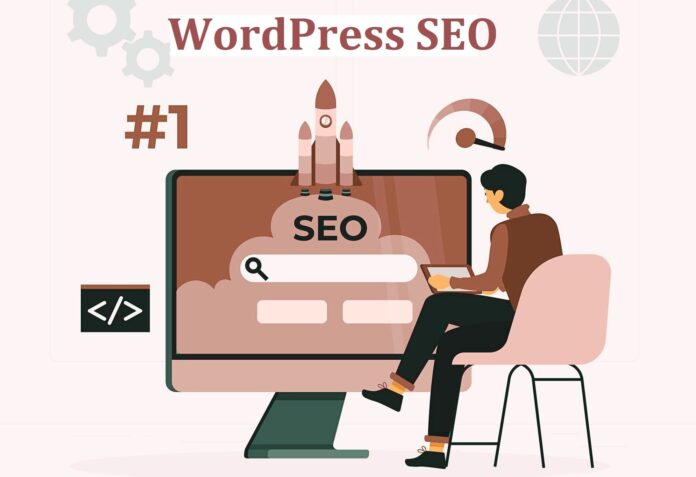SEO is the most competitive space, so you need to pull up your socks to sustain the pressure of keeping up with significant rankings. WordPress is the most accessed CMS platform, and most businesses start a website using the platform. But, the most critical part of using WordPress is establishing an online presence.
To gain traction and visibility online, using SEO techniques is vital. Also, you would want to customize your WordPress site to rank well in SERP and achieve enhanced marketing results. For this reason, you need to optimize SEO for WordPress so that your site gets exceptional visibility.
Dive into the vital tips for enhanced performance
1. Enable Search Engine Indexing
Google uses crawlers to search and categorize online content. These crawlers are bots that follow different links, scan web pages, and gain added data from a website.
When you enable search engine indexing, you can make your site more visible. Plus, you won’t rank higher if the option is disabled.
To enable this option – go to the settings page in the admin panel and uncheck the box next to search engine visibility.
By doing this, you can open your WordPress website for indexing. Moreover, you can use indexing tools like – Google Search Console and Robots.txt for indexing purposes.
2. Try Minimising the Loading Speed
Loading speed determines the rank to an extent. Most users do not have the patience for a site to load. Simply put, the higher the loading time, the lower will be your rank.
For Google, loading speed is an important ranking factor. Also, slow-loading websites have higher bounce rates. Due to this, the site may lose its SEO score. The best solution for this is – Google’s PageSpeed Insights Tool. The tool is ideal to analyse the issues with your loading speed. Plus, it will provide valuable insights to improve it. By minimising the page speed, you can provide an exceptional user experience.
3. Use the Right Themes
If your WordPress site has low organic traffic despite good website design, the problem could be with the site theme. Plus, picking an SEO-friendly WordPress theme is critical in site optimization.
When you install an SEO-optimized theme, you can make your site more user-friendly. But, you need to choose an appealing design and a good interface for the site. Also, most SEO-friendly themes have responsive layouts.
Of course, creating quality content is essential for the site, but optimized themes can give you exposure in the web space. You can consider themes like – Divi and Astra for custom website design.
4. Install Different Plugins
So many WordPress tools are available, so installing one can be quite overwhelming. However, you can find the ones that can optimize your website for SEO. Most plugins are adept at handling technical off-page and on-page optimization.
In addition, SEO plugins can cover content optimization, keyword research, adding links, etc. Some SEO plugins can go beyond this and help you to improve your website rank.
It is vital to understand which plugins can help you rank higher and – the ones that are not needed. Plus, using the right plugins can help you analyze website traffic.
5. Optimize Content and Images
Image optimization can be a game changer for SEO. You can rank your site higher by using the image file names and compressing them. In addition, adding the description alt text and alternate text can make it easier for crawlers to find your site.
Along with images, content optimization is essential. For this, target a keyword and ensure it aligns with the search intent. Plus, your site content should cover everything searchers want to know.
Consider backlinks, as they can help with site rankings. By optimizing images and content, you can boost your SEO rankings significantly.
6. Use Schema Markup
If you use Schema Markup, Google will understand your content better. It helps the search engines to rank your page based on search queries.
Markups are tags you can use to boost your site visibility in SERP. Most importantly, Google pulls more data when a site uses schema. You can get rich snippets by adding different schemas like – ratings, duration, pricing, and listicles.
Rich snippets can help local SEO, as most people search for things around them. Also, you can use WordPress plugins like – Schema Pro and Structured Data Schema for your WordPress website.
7. Use Internal Linking
Internal linking can help to enhance your SEO performance. With this SEO technique, you can insert one page in another page – of the same website. If users read one article on your page, they will be redirected to other relevant articles, thus boosting engagement.
For an effective linking strategy – don’t cannibalize the links, but use only relevant ones. Ideally, you can use descriptive anchor text, which hints at the page feature.
Crawlers can go through every page with an internal linking strategy, so it will boost your chances of ranking on SERP. Also, quality links can improve the SEO score of your site.
8. Make it more Mobile-Friendly
People access mobile sites more than web pages, thanks to mobile phones. Due to this, it becomes essential to focus on responsive and mobile-friendly design.
Search algorithms consider mobile-friendliness as one of the vital factors of SERP rankings. You can install mobile-friendly plugins, themes, designs, and navigation menus to make your site mobile-friendly. Also, you should wisely install them and specially stop using Nulled WordPress Themes and plugins to keep your site free from any threats and help you attain mobile-friendly design.
Besides, if your site is not mobile-friendly, it won’t be able to provide a seamless user experience to visitors. Once you use a mobile-friendly design, you can test and check if it renders correctly. Not having a mobile-friendly design can impact your SEO score.
9. Optimize Meta Descriptions
Writing short text para placed in HTML on a web page plays a significant role in boosting SEO. It influences searchers’ decision to click the content of your webpage.
If the meta description is relevant and descriptive – chances are more users will click on the link. Also, the quality of it will influence the click-through rate, so you should use it wisely.
Write a readable copy, as keyword stuffing can make the website spammy. The length should be between 60 to 155 characters. Plus, don’t duplicate the descriptions – write them for every web app. Well-optimized meta descriptions and title tags can help your site to gain online visibility.
10. Use XML Sitemap
Google and other search engines use sitemaps to crawl and find websites. Sitemaps act as a roadmap for your site. They help to locate all the significant web pages. A sitemap has a time stamp and date next to each URL, informing search engines about the last update.
You can submit an XML sitemap to Google Search Console if you haven’t. Additionally, plugins like Rankmath can help you generate XML sitemap for your website.
The best part is that plugins update sitemaps when you add or remove web pages from the website. Also, the pages you include in your sitemap should be relevant to search engines.
11. Choose an ideal Hosting Provider
Choosing the best hosting provider can boost SEO. A hosting provider can establish your site and control elements like – speed, performance, storage, and security.
Speed and performance are two vital elements for ranking on SERP. Also, security will add a layer to your site and prevent hacking in web space.
An ideal WordPress plan by a hosting provider will ensure that your site remains up at all times, improving the ranking in SERP. The best part about hosting providers is that you can choose a WordPress plan based on your budget.
Conclusion
If you don’t optimize your website for SEO, you will have to compromise on the ranking. Due to stiff competition in the web space, your website will lag.
It’s best to work on a foolproof SEO strategy that will help your site rank better. Before you begin – make a checklist of optimization tricks you want to include.
It’s important to use plugins and tools available to check for site errors so that you can work on them to improve ranking. WordPress SEO covers themes, plugins, site structure, meta descriptions, and image optimization – follow the checklist to get the best results.
Author Name:- Harikrishna Kundariya
Biography:- Harikrishna Kundariya, a marketer, developer, IoT, ChatBot & Blockchain savvy, designer, co-founder, Director of eSparkBiz Technologies. His 12+ years of experience enables him to provide digital solutions to new start-ups based on IoT and SaaS applications.














